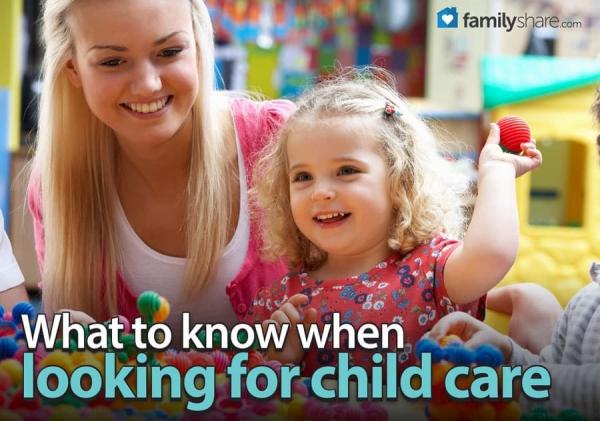
When you take your kids to day care do they jump and run joyfully from your arms to play with friends, or do they cling to you crying and begging you not to leave?
All over the world parents spend months planning and preparing to have a baby. They also know that when their baby is still very small and helpless, they will have to leave it in someone else's arms while they work. No matter where you live, who you are, or why you need day care you want to be able to trust that you have chosen the best possible situation for your child.
The National Association of Child Care Resource and Referral Agencies (NACCRRA) studied child care in over twenty countries around the world. What they found is that child care is very similar in 20 different countries. They examined child care providers using international benchmarks created to ensure they were safe, and the environment was safe. The benchmarks included a list of the most basic things a daycare should have, whether it is in a home or center.
Below is a list of some of the international benchmarks for quality child care and some of my own added expertise. When choosing day care parents should look for:
A safe, hazard-free environment
A day care should have the most basic of safety equipment installed. At a day care facility or home, electrical outlets should be covered and oven controls should be out of reach. Baby gates should be used on stairways and outside door knobs should be childproofed. Your day care is a business and often houses more children than your own. Glass and other breakables should be out of reach and the environment should be set up for maximum safety. The area should allow your child maximum freedom to play without someone telling them not to touch decorations or hot stoves.
Day care should be more than safe. It should be fun and educational, inspiring children to learn, play and grow. Is the day care clean, bright and cheerful with child-friendly decorations and furniture? Or, is it dark, dirty and centered around a television? Does your provider have gold fish to teach pet care or a dog that may not be child-friendly?
Child care providers should be safe
Any adult or child over 12 who enters the day care or home day care facility should be able to pass a criminal background check. Most states and many countries require this before care providers can be licensed. Don't be afraid to ask. Remember, you are paying your day care provider. They work for you.
Show up at your day care unannounced at irregular intervals and check to see who is there. Is anyone there you don't expect? Use your parental radar and check your gut. How do you feel about the situation? Trust your instincts. A good provider expects and understands a cautious parent.
Childcare providers should be educated
Child care providers should have basic first aid and lifesaving skills like infant and child CPR, which is different from adult CPR. They should notify you of accidents, injuries or illness immediately.
It's a bonus when your day care provider speaks two languages, or plays a musical instrument and is willing to share their talents with your children. When interviewing providers ask what they do to educate children or help with homework. What learning opportunities do they provide? Watch out for homes with a television constantly running, or providers who are on the computer and ignoring children. Look for children's art on the wall. This is a sign of a provider who isn't afraid to make a little mess with fingerpaints or clay.
Safe provider and child numbers
One provider can safely care for 2 infants or 4 toddlers, not ten. Most countries have guidelines for provider-to-child ratios. But, I say, use your own good judgement. Look around and count the number of providers and children, knowing a little chaos is to be expected. Ask yourself if it feels safe, or are there more children than your provider can safely and legally watch?
Toys and art supplies should be clean, fun and safe. Benchmarks for Quality Childcare by NACCRRA lists areas of development and suggests providers supply toys to help your children learn and grow in these areas. For example:
Motor development
Items like blocks to stack, bicycles to ride and balls to roll.
Language and literacy
Books to read, paper and pencils, and story time.
Math
Numbers posted as well as counting with children, and items to play with that encourage counting and sorting skills.
Science
Opportunities to experiment and invent or observe nature.
Dramatic play
Dress up and play house.
Culturally appropriate materials
Dolls and pictures of children from different cultures and traditions.
Discuss discipline
If your child hits or bites another child, what will happen? Do they use time out? Where is the designated timeout area? Do they spank? Do you approve of the methods they use? Ask about their plan when children misbehave.
However, the best advice is to listen to your heart. When choosing a provider, surprise them, go to the house or school without giving them notice, and listen before entering. Do you hear yelling or children's laughter? You are hiring them. You have the right to inspect the house from top to bottom.
Watch your children. They will tell you what works. Do they run from your arms to play and cry when its time to go home and leave their friends? If they do, you have chosen wisely. Choose day care that makes you want to stay and play.

